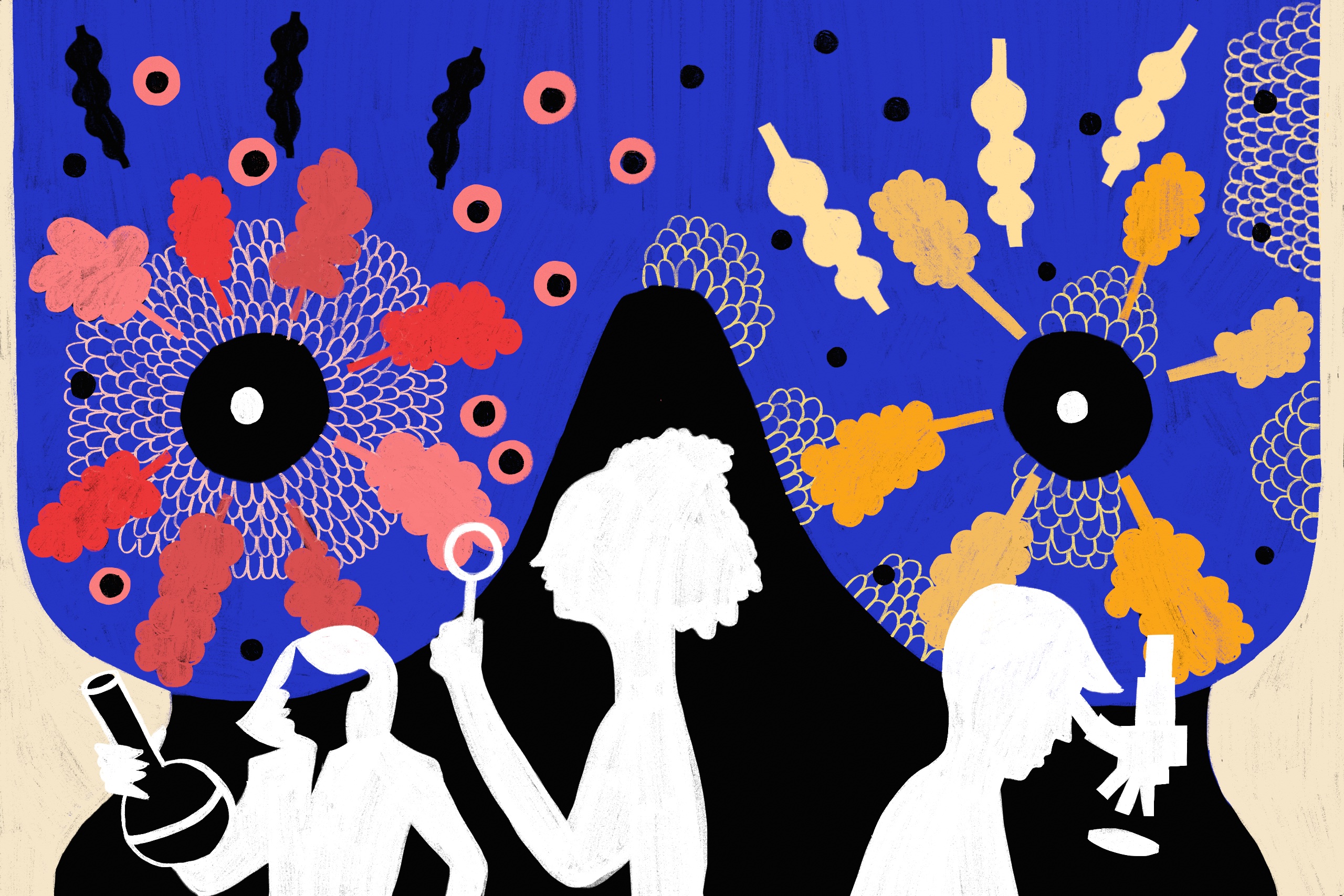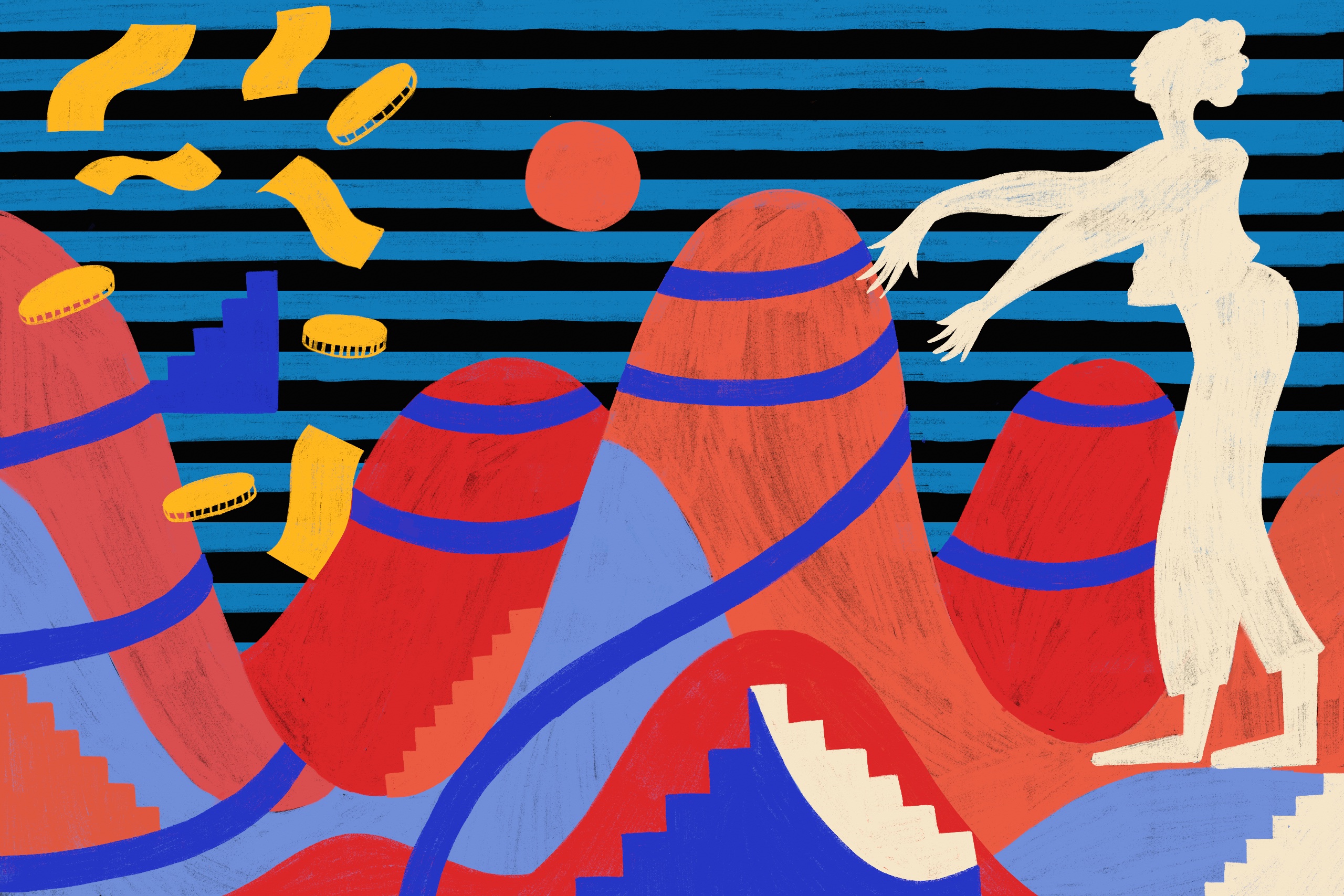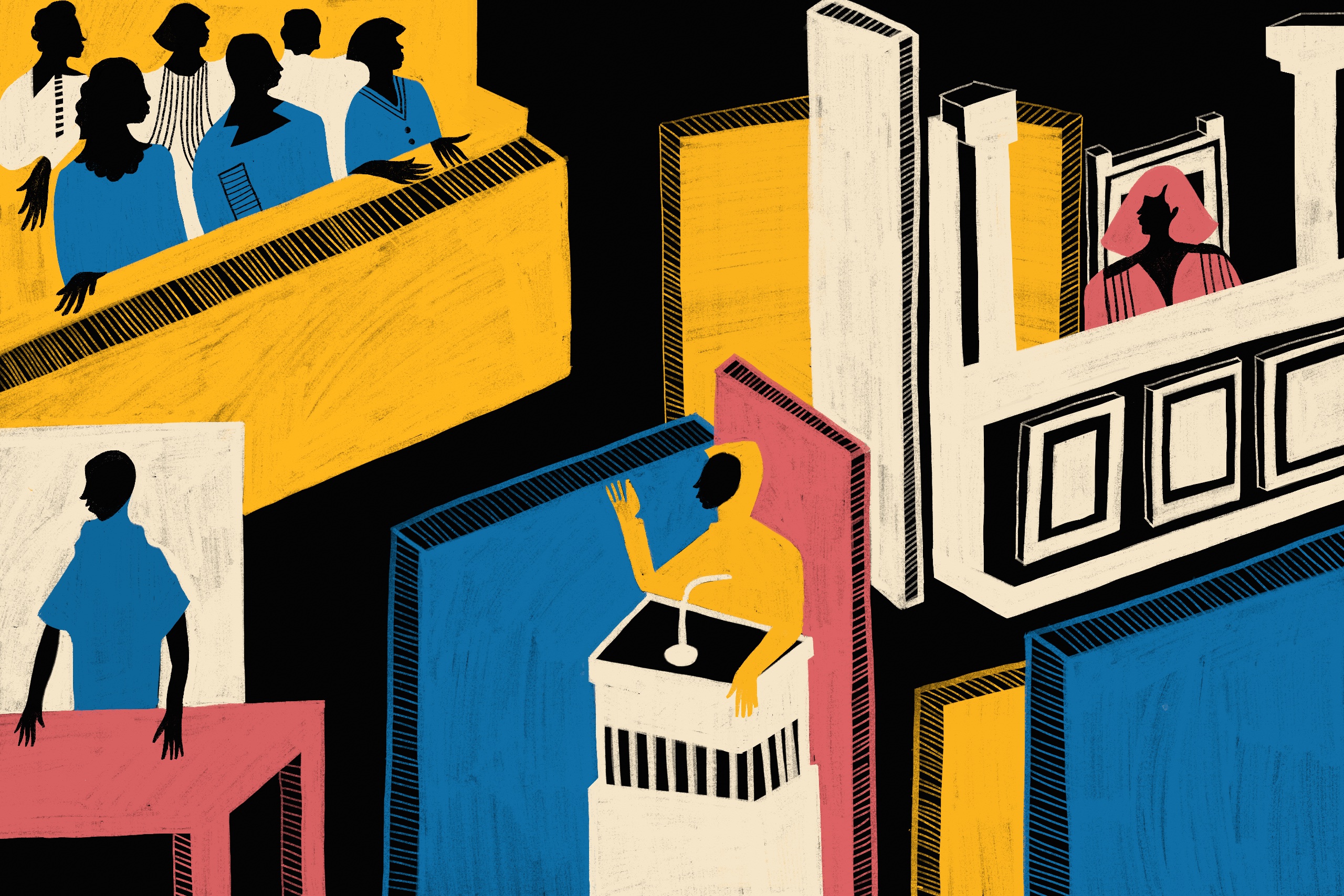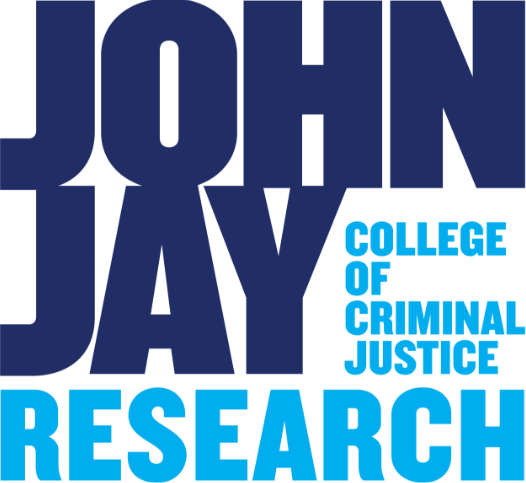A New Moment of Opportunity for Racial Equity at John Jay College
President Karol Mason and faculty researchers are working to reduce racial disparities in American institutions—including the college itself
Researchers: Karol Mason, Lissette Delgado-Cruzata, Michelle Holder, Henry Smart III
Author: Michael Friedrich
This article provides an overview of a small number of racial justice and racial equity research projects at John Jay College, framed by the college’s response to the May 2020 murder of George Floyd and the nationwide protest movement that followed. It is important to note that the universe of racial justice focused research projects at John Jay College is large, and includes many researchers and projects we have profiled in previous issues of Impact, including:
- The work of José Luis Morín, Claudia Calirman, Pamela Ruiz, and Marcia Esparza examining and responding to violence in Latin America
- The work of Gloria Browne-Marshall and others on racial justice in the criminal legal system
- Research by Jonathan Gray, Silvia Mazzula, Kevin Nadal and Ed Paulino on the relationship between race and identity
- Individual profiles of researchers like Belinda Rincon and Maureen Allwood that directly address the importance of racial identity in a wide range of disciplines and research agendas
We will continue to highlight racial justice research, and the work of John Jay scholars of color, in future issues of Impact. Please reach out to us at oar@jjay.cuny.edu to discuss your work or the work of your John Jay colleagues. We will make every effort to feature it in future Impact articles.
At a moment of heightened awareness of racial inequities in the justice system, John Jay College of Criminal Justice is taking steps to address these issues through research, public policy, and changes within the college itself.
When the news broke of George Floyd’s death at the hands of the Minneapolis police in May 2020, it was “gut-wrenching,” said John Jay President Karol Mason. In her previous role at the Justice Department’s Office of Justice Programs, she had overseen the launch of the National Initiative for Building Community Trust and Justice, a project housed at John Jay that worked with law enforcement in six cities to reduce bias, improve fairness, and foster racial reconciliation in policing. The goal was “never having another Michael Brown situation again,” Mason said. Minneapolis had been one of the cities in the project. Now, another death of an unarmed Black man had been caught on camera there, and protests were erupting across the country.
“As the president of John Jay, and as a Black woman, I felt as if I needed to use the voice and the platform of the college to figure out how we could help the country find a pathway forward,” Mason said. “It was a moment for us to examine not just how we support the work external to John Jay but also what’s happening internally, and whether we are appropriately educating and equipping our many graduates who proudly wear a uniform.”
“We are using this time as an opportunity to really look deeply at ourselves and what we do internally, and how we can help support the country through this period.”
—John Jay College President Karol Mason
Last fall, in partnership with the National Organization of Black Law Enforcement Executives (NOBLE), the college convened conversations with diverse leaders—from community activists, to police chiefs, policymakers, public health professionals, philanthropists, researchers and educators—in an effort to chart a path toward safer, more equitable communities. Those conversations yielded the Future of Public Safety report. This report has been shared widely with key stakeholders, city officials and public safety professionals, including a coalition of mayors that signed on to the Obama Foundation’s Reimagine Policing pledge, cities participating in the National League of Cities task force to reimagine public safety, and the National Forum of Black Public Administrators.
Even before the events of 2020, John Jay had been working toward a new vision for the justice system. Launched in 2015, the National Initiative for Building Community Trust and Justice was one such effort. The college’s Smart on Crime Conference, held annually since 2017 in collaboration with partners including the Center for American Progress, also provides a forum for researchers and policymakers to explore measures that state and local actors could take to effect criminal justice reform and reduce racial disparities.
But the convergence of challenges to racial equity related to the COVID-19 pandemic, the economic downturn, and the growing demands for justice reform called for more action. In the past year, the college has made further efforts to address racial inequity with faculty, staff, and students. Last year, as part of an ongoing series predating the pandemic, Mason brought in trainers from the Racial Equity Institute to give a two-day intensive workshop on America’s racial history to the President’s Leadership Council. The college is now developing a training for faculty about diversity and inclusion and, responding to the issues raised in a formal letter from the Black Student Union, 19 academic departments have begun working to create an anti-racist curriculum with guidance from a framework that has been informed by feedback from across the institution.
Beyond this, John Jay faculty are tackling these issues through a range of research projects and curricula. “We are using this time as an opportunity to really look deeply at ourselves and what we do internally, and how we can help support the country through this period,” Mason said.

Racial Disparities In Health
Sciences Professor Dr. Lissette Delgado-Cruzata, in collaboration with Dr. Carlton Jama Adams of the Africana Studies Department, has developed a course on race and health that draws on both sociological and biological perspectives of race. She teaches students about human evolution and the genetic differences between human groups. One of her goals is to increase non-science majors’ science literacy about racial identity.
“We need more research into those understudied groups to eliminate racial and ethnic disparities.My focus is in that direction. We need to change that trend.”
—Lissette Delgado-Cruzata
“Races represent geographical clustering of individuals that took place during the migration and settling of human populations in different parts of the world,” Delgado-Cruzata said. “That led to minor changes to their genomes.” The distinctive genomic features of different populations can have impacts on health and disease. In Spring 2021, her course addressed COVID-19 and racial disparities in infection and severity. With her students, Delgado-Cruzata explored how these disparities result not only from social and environmental factors but also biological ones.
Apart from her work in the classroom, Delgado-Cruzata’s research also focuses on understanding and addressing health disparities. She is studying epigenetic markers in breast cancer, a disease in which racial and ethnic health disparities are a big concern. For example, when compared with women from other races, African American women more often develop a particularly aggressive form of this disease. Other groups in the African diaspora, including Latinas and Afro-Caribbean women, are also affected; these groups are often understudied due to social and economic inequalities, meaning we know less about the trajectory of the disease in these populations. “We need more research into those understudied groups to eliminate racial and ethnic disparities,” Delgado-Cruzata said. “My focus is in that direction. We need to change that trend.”
To further her work, Delgado-Cruzata recently received a Fulbright Scholar award to visit Brazil’s National Cancer Institute in Spring 2022 to conduct research on genetic ancestry and epigenetic markers in breast cancer in Brazilian women. Research in a population with such mixed ancestry will ultimately improve scientific understanding of the impact racial and ethnic differences can have on this disease.
Ultimately, Delgado-Cruzata’s goal is to identify markers to help screen those in high-risk populations, giving doctors the tools to detect and prevent disease in these individuals before it is too late. She claims improvements in screening and detection would go a long way toward reaching racial equity in breast cancer treatment: “Early identification of those who stand a greater chance of getting a disease is the best way to make an impact.”

Bridging The Double Gap’
In John Jay’s Economics Department, Dr. Michelle Holder is conducting pioneering research on labor market imbalances based on race and gender. A 2020 study by Holder looks at the pay disparity African American women face today. Her research, which finds a unique “double gap” in wages for Black women, estimates that they involuntarily forfeited about $50 billion of wages to the corporations they worked for in 2017. This figure provides a snapshot of the massive economic disadvantage suffered by African American women.
“Black women were more vulnerable during this pandemic recession because of their concentration in the low-wage service sector. There are historical and systemic reasons for that, and it’s a problem in this society.”
—Michelle Holder
While previous studies have shown that Black women make 61 cents on the dollar compared to white men, this new figure shows how wage discrimination harms Black women and benefits the private sector. “This means that an individual Black woman who worked in this country has fewer resources for herself and her family,” Holder said. “It’s also a huge loss to the community.
Holder’s study came at a relevant moment. The economic downturn brought about by COVID-19 hit Black women especially hard. Because of existing social and economic disparities, they were in one of the most unfavorable positions in the U.S. workforce when job losses began, and another recent study by Holder found that, during the pandemic, they were most likely to lose jobs as cashiers and childcare providers. “Black women were more vulnerable during this pandemic recession because of their concentration in the low-wage service sector,” she said. “There are historical and systemic reasons for that, and it’s a problem in this society.”
Holder envisions several possible solutions to the double gap in wages. One is working to close the gap between Blacks and whites in college completion, which would be helped by making public colleges more affordable. Another is to prohibit employers from requesting salary history during the application process, since research shows that that practice disadvantages women of color particularly. That change could be legislated at the state level. Finally, Holder would like to see more data transparency on demographics and wages, which would help to bring litigation in cases of wrongful pay disparities.

Skin Color In The Courts
Other John Jay research focuses squarely on how racial bias plays out in the justice system. Dr. Henry Smart III focuses on the problem of “colorism,” or discrimination against people with darker skin. In 2020, he conducted a controlled pilot study using a crowdsourcing platform to survey 450 people about how they perceived the severity of a variety of crimes. He found that older people in particular perceived crimes as more severe—and felt more punitive—when the crimes were committed by people with darker skin tones.
“We have it well documented that Black folks are more likely to get longer sentences, more likely to be denied for parole, and more likely to serve most of their sentence than their white counterparts.”
—Henry Smart III
Smart is using the results of that study to design a project that aims to reduce bias in courtroom settings. The experiment would put all parties—judges, attorneys, jurors, witnesses, victims, and the accused—in separate rooms to anonymize the legal process. “It lessens the opportunity for people to operate using their biases, whether those biases are conscious or unconscious, and it strips the process down to just the case facts,” Smart said.
Cloaking the identities of courtroom participants would protect judges, protect jurors and others who want to help in the legal process, and prevent judging defendants by their looks. “We have it well documented that Black folks are more likely to get longer sentences, more likely to be denied for parole, and more likely to serve most of their sentence than their white counterparts,” Smart said. Ultimately, he believes the experiment could play a role in making the courtroom setting more just.
Smart said that the spirit of his project is linked to the current movement for racial justice that ignited globally last summer. Racial bias has been a part of the American justice system since its inception, and it remains a part of even the best intentioned officials’ cognition. “Bias is built-in, and it starts from the moment someone picks up the phone to engage law enforcement at the local level,” Smart said.
That is a common thread among researchers at John Jay. Those whose work addresses racial equity believe that a special opportunity exists today to elevate long-standing problems and advance solutions that have the potential to transform our institutions into more just ones.
Mason shares their conviction. For her, it’s a labor of love to address race and justice at John Jay. “We will have failed if we don’t use this moment to really look at systemic issues, and not just deal with symptoms but really deal with the deep underlying issues,” she said. “We have an opportunity now, with all the federal money coming into schools and governments, to address those fundamental foundational issues.”
Feature: Diana Ejaita
